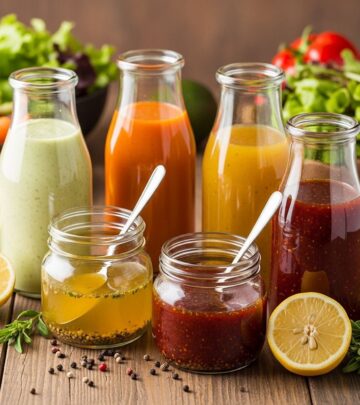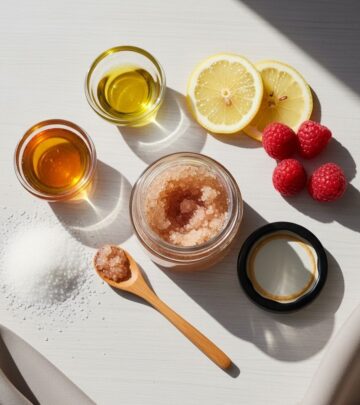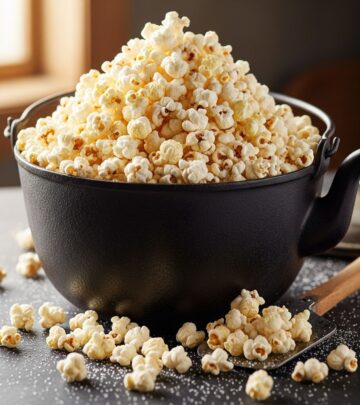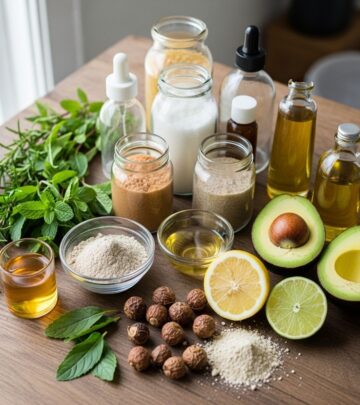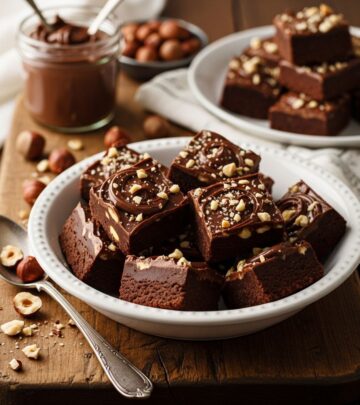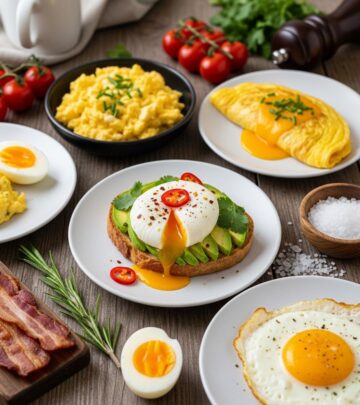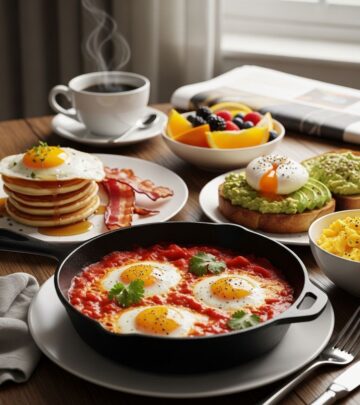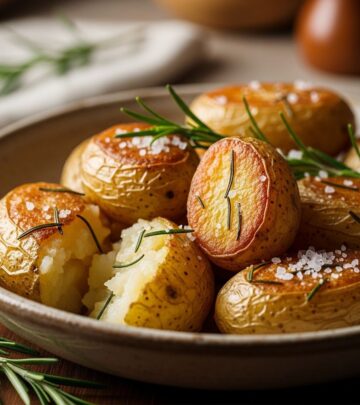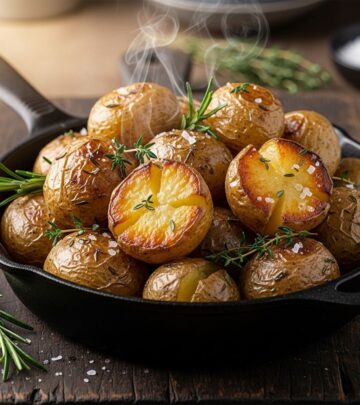Mashed Potatoes Recipe: Complete Guide To Creamy Perfection
Whip up creamy, dreamy side dishes that elevate every meal with effortless delight!
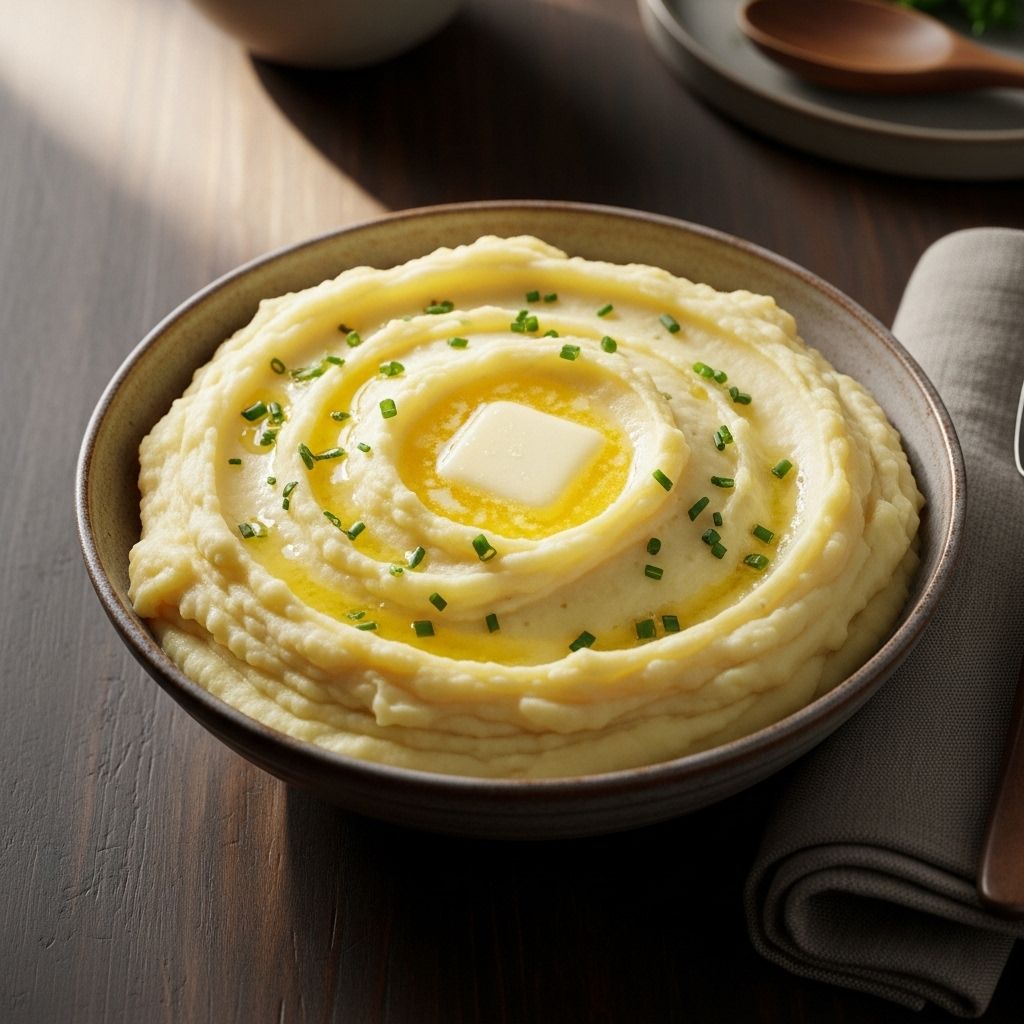
Image: HearthJunction Design Team
Basic Mashed Potatoes: Classic Comfort, Simple Perfection
Few side dishes are as universally beloved and effortlessly comforting as a heaping bowl of mashed potatoes. Creamy, fluffy, and customizable, this staple graces holiday tables, weeknight dinners, and everything in between. Here’s a comprehensive guide to mastering basic mashed potatoes—from ingredient selection to expert techniques and tantalizing variations.
Ingredients for Basic Mashed Potatoes
- 2 pounds baking potatoes (such as russet or Idaho), peeled and quartered
- 1 cup whole milk (substitute 2% or skim as desired)
- 2 tablespoons butter (for extra richness, use up to 4 tablespoons)
- Salt, to taste
- Freshly ground black pepper, to taste
- (Optional) 1–3 cloves garlic, peeled
Note: Ingredient measurements can be scaled up or down to serve any size gathering. Yukon Gold potatoes also make an excellent, slightly richer mash, while red potatoes yield a more rustic texture.
Step-By-Step Guide: How to Make Mashed Potatoes
- Prepare the Potatoes: Peel and quarter the potatoes to ensure even cooking. Rinse under cool water to remove excess starch.
- Boil the Potatoes: Place the potatoes (and optional garlic) in a large pot. Cover with cold, well-salted water by about an inch. Bring to a boil over high heat, then reduce to a gentle simmer. Cook for 15–20 minutes, or until the potatoes are tender and easily pierced with a fork.
- Heat the Dairy: While the potatoes are nearly done, combine milk and butter in a small saucepan over low heat. Warm gently until the butter is melted and the mixture is steamy but not boiling.
- Drain and Dry: Drain the potatoes thoroughly and return them to the empty hot pot for about 30 seconds. This helps excess moisture evaporate, preventing watery mash.
- Mash the Potatoes: Using a potato masher, begin mashing the potatoes, gradually adding the warm milk-butter mixture. Continue mashing—or switch to a hand mixer for extra smoothness—until the potatoes reach your desired consistency. Season generously with salt and fresh black pepper.
- Serve Hot: Transfer to a serving bowl, top with a pat of butter if desired, and enjoy immediately while hot and creamy.
Best Potatoes for Mashing
The choice of potato influences texture and flavor:
- Russet Potatoes: Fluffy, light, and absorbent. Ideal for classic, airy mashed potatoes.
- Yukon Gold Potatoes: Creamy, buttery, and slightly golden. These produce a richer, denser mash and are a favorite for many chefs.
- Red Potatoes: Waxier, yielding a chunkier, rustic mash with extra nutrients if skins are left on.
Tips for Perfect Mashed Potatoes
- Start in Cold Water: Adding potatoes to boiling water leads to uneven cooking. Always start with cold water for even texture.
- Salt the Water: Like pasta, potatoes absorb salt during cooking, enhancing their natural flavor.
- Don’t Overwork: Over-mixing, especially with a food processor or blender, can make potatoes gluey. Stick to a masher or hand mixer for best results.
- Add Dairy Slowly: Incorporate the milk and butter gradually while mashing for a creamier, smoother blend.
- Keep Warm Until Serving: Mashed potatoes cool quickly. Keep them warm by placing the bowl over a pot of gently simmering water, or hold in a slow cooker on low.
Flavor Variations for Mashed Potatoes
Once you’ve mastered the basics, try one of these delicious twists:
- Garlic Mashed: Add 2–4 cloves garlic to the boiling water and mash along with the potatoes for deep, mellow flavor.
- Cheesy Mashed: Stir in 1/2–1 cup grated Parmesan, sharp cheddar, or cream cheese for extra richness.
- Herb-Infused: Mix in chopped fresh chives, parsley, or thyme for a pop of color and earthy aroma.
- Sour Cream and Onion: Substitute half the milk with sour cream and add finely chopped green onions for tang.
- Loaded Mashed: Top with crispy bacon bits, extra cheese, and scallions for a crowd-pleasing party side.
Serving Suggestions
Mashed potatoes are endlessly versatile and pair perfectly with a variety of main dishes, including:
- Roast turkey or chicken
- Beef pot roast or meatloaf
- Pork chops or ham
- Vegetarian mushroom gravy
- Classic brown or country gravy
Storage and Reheating
- Refrigeration: Cool leftovers to room temperature, then store in an airtight container in the fridge for up to 3 days.
- Freezing: For longer storage, portion mashed potatoes into freezer-safe containers. Thaw overnight in the refrigerator before reheating.
- Reheating: Warm gently in a saucepan over low heat, stirring frequently. Add a splash of milk or cream if needed to restore creaminess.
Common Mistakes and Fixes
| Mistake | Result | How to Fix |
|---|---|---|
| Over-mixing | Gluey, dense potatoes | Mix only until smooth. Use a masher or hand mixer. |
| Too much liquid | Runny, soupy mash | Add more cooked potatoes or stir in instant potato flakes to absorb excess moisture. |
| Under-seasoning | Bland, flat flavor | Add salt and pepper gradually, tasting as you go. |
| Potatoes not drained | Watery texture | Let drained potatoes sit in the hot pot briefly before mashing. |
Nutrition Information (Per Serving)
Nutrition values will vary based on exact ingredients and portion size, but a serving (about 1 cup) of basic mashed potatoes prepared with whole milk and butter contains approximately:
- Calories: 210–250
- Fat: 8–10g
- Carbohydrates: 34–38g
- Protein: 4–5g
- Sodium: varies by seasoning
Expert Tips from the Allrecipes Community
- Heat Matters: Warming the milk and butter before adding them to the potatoes keeps the mash hot longer and produces a more velvety consistency.
- Adjust for Texture: For chunkier mash, simply mash less and use a fork or potato ricer. For ultra-smooth potatoes, pass through a food mill.
- Prep Ahead: Peel and chop potatoes in advance. Store submerged in cold water in the refrigerator for up to 24 hours to prevent browning.
Frequently Asked Questions (FAQs)
What is the best potato for mashed potatoes?
Russet (baking) potatoes are classic for a fluffy, light texture, while Yukon Golds create a creamier, denser mash. Both are excellent choices. Red potatoes, with their waxy texture, are best for rustic, chunky mashed potatoes with skins left on.
How long do you boil potatoes for mashed potatoes?
Peeled and quartered potatoes generally take about 15–20 minutes to boil until fork-tender. Whole potatoes will take longer; check doneness by piercing with a fork—there should be no resistance.
Should you add cold or warm milk and butter?
Warm milk and butter blend more smoothly into the potatoes, producing a creamier mash and helping the dish retain heat longer.
My mashed potatoes turned out gluey. What went wrong?
Over-mixing, especially with a blender or food processor, breaks down the potato starches and creates a gluey texture. Use a masher or hand mixer and mix only until just smooth.
Can you make mashed potatoes ahead of time?
Yes! Prepare and refrigerate up to two days in advance. Reheat gently with a splash of milk or cream to restore creaminess. For best results, keep the potatoes warm in a slow cooker set to low for serving.
Summary: Why This Recipe Works
- Simplicity: Using just a handful of ingredients keeps flavors clean and classic.
- Customizable: The basic method is a template for countless flavor additions and creative spins.
- Crowd-Pleasing: Familiar, comforting, and suited to nearly every main dish or cuisine.
Try This: Creative Leftover Ideas
Leftover mashed potatoes are a hidden gem in the kitchen. Repurpose them with these ideas:
- Potato Pancakes: Mix with an egg and a little flour, shape into patties, and fry until golden.
- Shepherd’s Pie: Use as a topping for a classic meat and vegetable casserole.
- Soup Thickener: Stir into soups and chowders for added creaminess and hearty texture.
- Stuffed Potato Bread: Add mashed potatoes to bread dough for softness and moisture.
Conclusion
Basic mashed potatoes are a culinary foundation—simple to make, endlessly adaptable, and always a crowd-pleaser. Whether served plain or dressed up with gourmet touches, their creamy goodness brings warmth and joy to any table. With careful technique, the right potatoes, and just a few quality ingredients, you can master this classic side dish for everyday meals or special occasions alike.
References
- https://www.allrecipes.com/recipe/24771/basic-mashed-potatoes/
- https://www.allrecipes.com/recipe/219077/chef-johns-perfect-mashed-potatoes/
- https://www.allrecipes.com/recipe/235812/mashed-potatoes/
- https://www.allrecipes.com/recipe/15213/the-best-mashed-potatoes/
- https://www.youtube.com/watch?v=Eq0CVwJctfw
Read full bio of Anjali Sayee

